Patrick’s Review of Star Wars Aftermath: Life Debt by Chuck Wendig
As many of you will no doubt recall, last year’s Star Wars: Aftermath by Chuck Wendig was met with mixed reviews. The more critical ones highlighted a variety of flaws, including the novel’s wandering plotline and halfhearted attempt at resolution, as well as Wendig’s choppy writing style and insistence on telling his tale in third-person, present-tense. While I personally enjoyed Aftermath for what it was, doing so required that I make an extra effort to filter out numerous problems related to Wendig’s stylistic and storytelling choices.
Fortunately, Wendig’s latest effort, Star Wars: Aftermath: Life Debt, is much better and, in my opinion, infinitely more enjoyable.
Yes, Wendig is still sticking with his third-person, present-tense style, and no, I still don’t like it. At all. To me, it’s like listening to a guitarist playing with his B string tuned just ever so slightly flat. Regardless of how brilliantly he may play, that flat note is always there poking at me like a stray whisker in my t-shirt collar. Granted, third-person, present-tense is not “wrong” in the sense that it’s wrong to perform with a badly tuned musical instrument. It is a technical choice that, unfortunately, tends to create the impression of an author who, deep down, would rather be a screenwriter than a novelist – whether that’s actually the case or not.
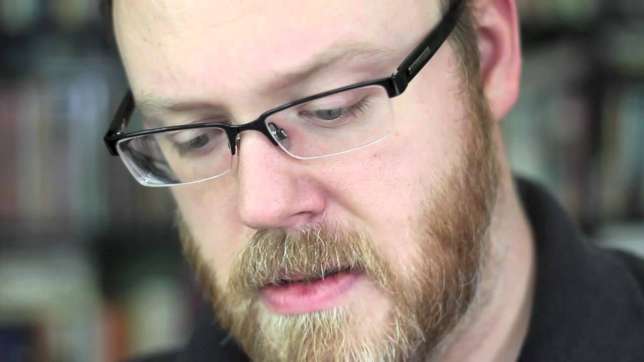
However, to his credit, Wendig also seems to have taken some of the other criticisms of Aftermath to heart. The result is a far more engaging and compelling story and a much smoother and more professional feel to the writing overall. (I do have to say, though… the use of “busted” in place of “broken,” as occurs on at least one occasion in Life Debt, will always make even the best writing sound amateurish.)
All right, all right, enough with the grammarian grousing already. What about the story? Well, again, I really dug the tale that Wendig had to tell this time around. No longer constrained by an as-yet unopened Star Wars “mystery box” and a 45-day deadline as he was for Aftermath, Wendig is now free to begin tying elements of his story to the “galaxy far, far, away” as it exists in the new Star Wars sequel trilogy, and he clearly had a bit more time to ponder how to go about doing so.
Life Debt picks up a few months after the events of Aftermath, with our new band of heroes now hunting down unreconstructed Imperials on behalf of the New Republic. It’s an interesting situation in which to place the main characters – a satisfying blend of classic Star Wars bounty hunting and our own world’s post-WWII efforts to track and capture Nazi war criminals. This particular story device has the added benefit of keeping our heroes in close physical proximity aboard their starship, which allows for some fun character interaction and development.
I found myself enjoying the new characters a lot more this time around, likely due in part to the fact that Wendig had had time to allow them to percolate in his head after rushing them into existence in the first novel in the series.
Sinjir Rath Velus, for example, is still the same glib smartass whom we met in Aftermath, and god love him for it. But Sinjir’s time working for the greater good alongside his new comrades has also given him enough distance from his role as an Imperial interrogator that he finds himself reflecting on how much of what he did as an Imperial was part of who he is, and how much of who he is has been permanently shaped by his actions as an Imperial. This provides some welcome balance and depth to his character. I’m looking forward to seeing how (or even if) Wendig ties off this thread in the next book.
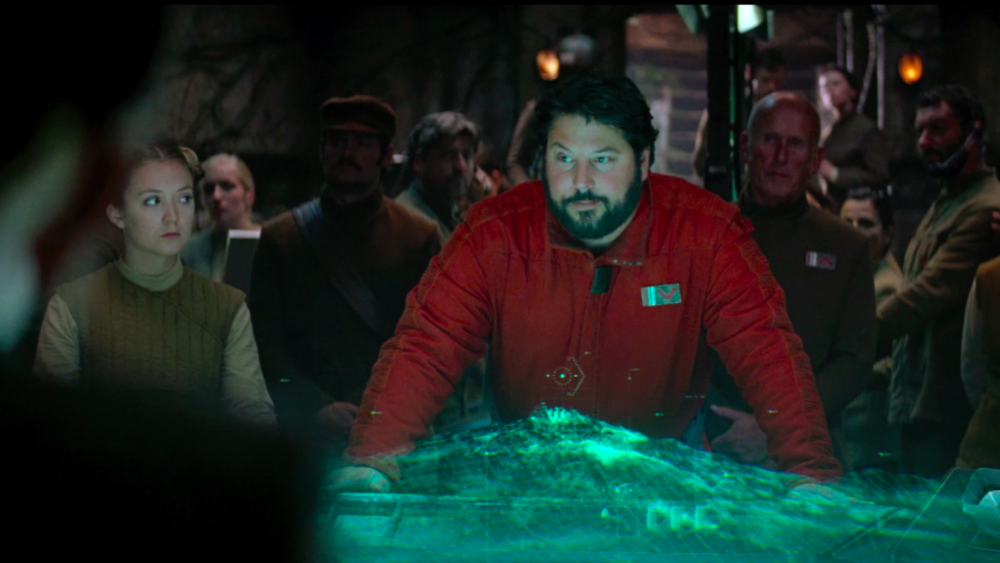
There are plenty of other characters who are going through changes of their own, of course. Norra and Temmin Wexley (who, as I think we all suspected, has now been revealed as “Snap” Wexley from TFA) continue to work on their own strained relationship, while also still dealing with the loss of Temmin’s father, Brentin Wexley, during the Emperor’s reign. Life Debt provides some interesting, if not entirely unexpected, wrinkles in the Wexley family’s personal journey, and we also see Temmin gradually beginning to resemble the man he’ll eventually become.
On the villainous side of the coin, Grand Admiral Rae Sloane is back, and we also get to learn a bit more about the mysterious fleet admiral, now revealed to be a former Jakku native named Gallius Rax. Rax, a former protégé of Emperor Palpatine, has taken full advantage of the chaos into which Palpatine’s death has thrown the Empire, and is in the process of consolidating the remnants of the Imperial forces into a newer, leaner Empire.
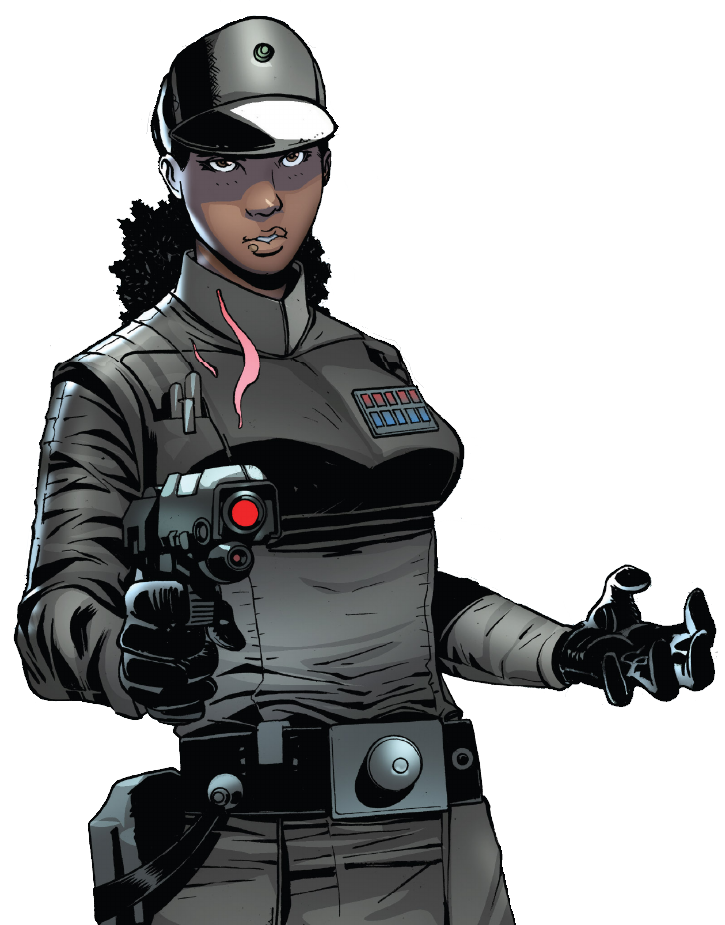
Sloane, whom Rax is considering for the role of Emperor, disagrees with the idea that the Empire can simply be reassembled without learning from Palpatine’s mistakes. In particular, she feels that a key reason behind Palpatine’s failure was that he placed blind ambition and autocratic rule ahead of solid, reliable governance in support of the common good. And, of course, she sees Gallius Rax’s plan for a resurgent Empire to be marred by this same fatal flaw. The result is a growing (and eminently satisfying) rivalry that simmers just beneath a thinning veneer of cooperation between Sloan and Rax.
Gallius Rax’s origin on Jakku leads to some additional revelations that suggest that there’s a lot more to the planet than the sun-blasted junkyard that we saw in The Force Awakens. Palpatine, in taking the young Rax under his wing, indicated to him that there was something on Jakku of great importance to him, and decades later Jakku still holds a strong significance for Rax beyond simply being the home world that he once abandoned. To say that signs point strongly to the climax of the Aftermath trilogy revolving around the Battle of Jakku would be an understatement. Exactly why Jakku is such a pivotal location for the Empire is a question that I expect we’ll finally get the answer to in the next book in the series.
Again, the story and the characters in Life Debt are, overall, a solid improvement over Aftermath. I’ll say it, though. I know I can’t be the only one who’s thinking it, but, well… for me, Life Debt gets a whole lot better the second Han Solo enters the picture. Part of it is the fact that Life Debt, as was the case with Aftermath, has a rather bleak, grim feel to it overall, and (as has been the case since 1977) introducing Han to the story lightens the mood and adds a much-needed touch of that classic Star Wars humor.

What’s interesting, though, is that this is not necessarily Han as we expect him to be post-ROTJ. We learn that the mission that he and Chewbacca began in Aftermath to liberate Kashyyyk ended up going horribly awry, and resulted in Chewie being captured by Imperial forces. Han feels as though he failed Chewie, and we now find him on Kashyyyk working on a plan to free his friend. However, Han’s guilt over Chewie’s capture never seems to fully explain why Han’s personality in Life Debt so strongly resembles that of his pre-Yavin self. I was able to let it go and just let my suspension of disbelief kick in, but it was a rather oddly realized version of Han’s character.
Princess Leia, having lost contact with Han, asks Norra, Sinjir and the rest of their team to find him. The mission is not sanctioned by the Republic, however, and it’s here that we begin to see the beginnings of Leia’s eventual break with the Republic to form the Resistance. As I mentioned earlier in the article, there are significantly more bits of connecting tissue between Life Debt and The Force Awakens than we saw in Aftermath, and as far as I’m concerned that’s a net plus for Wendig’s story.
There’s plenty to recommend about Life Debt, and while I still had some issues with it, I also found it to be a much stronger and more engaging tale than its predecessor. I’m looking forward to seeing how Wendig wraps everything up in Empire’s End next year, especially since it’s obviously going to cover the Battle of Jakku.
Bottom line: If you liked Aftermath, don’t give it another thought: pick up a copy of Life Debt and enjoy. If you weren’t crazy about Aftermath, though, I’d still say you ought to give Life Debt a try. I think it feels a lot more like what we were expecting the first time around, and you may just end up feeling the same way.

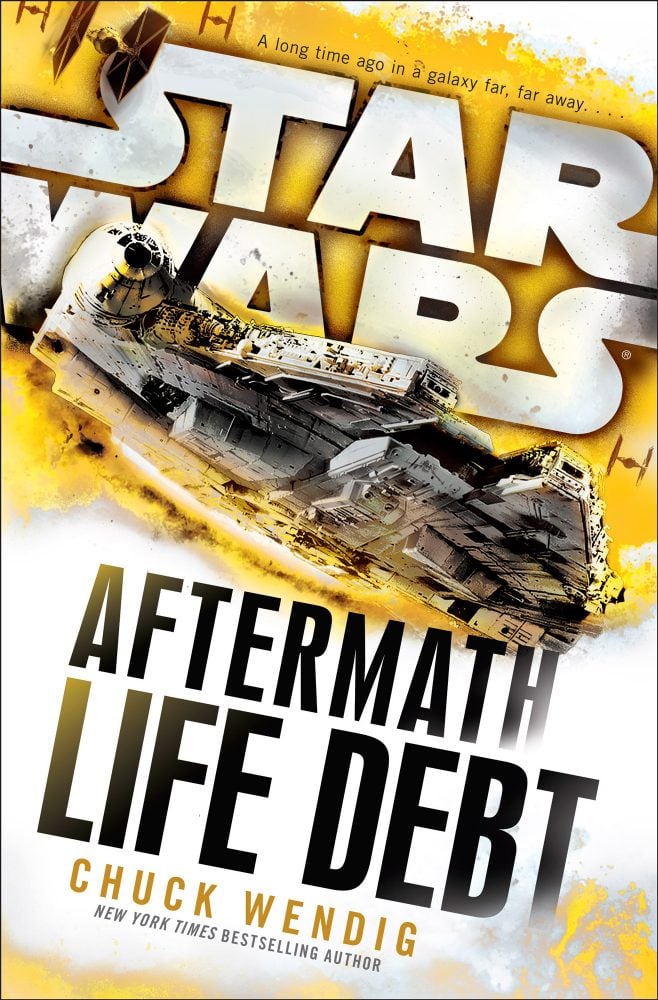
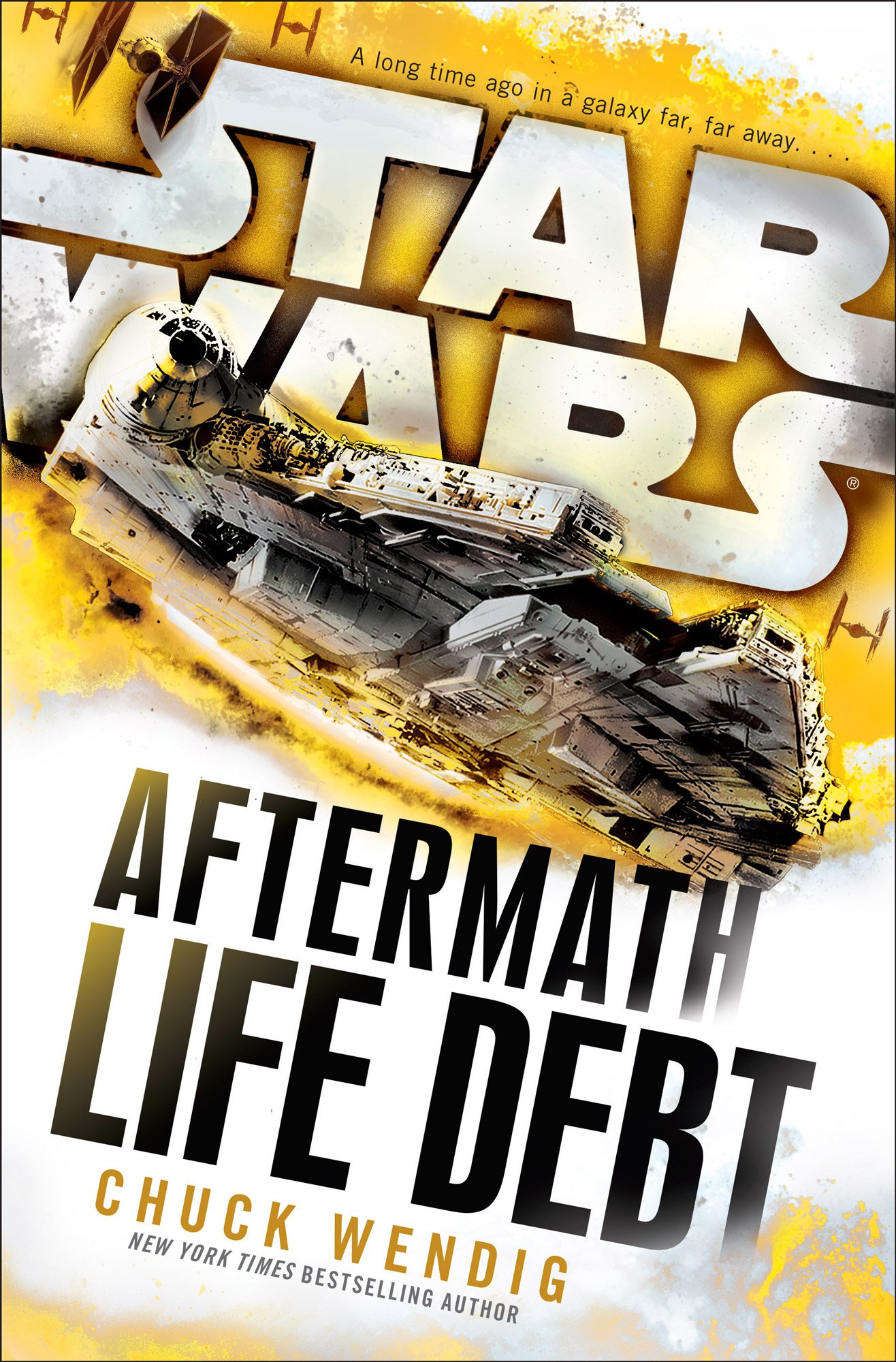


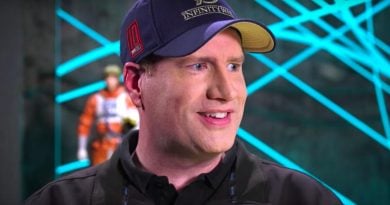
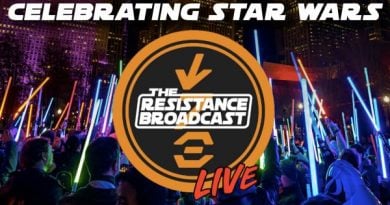
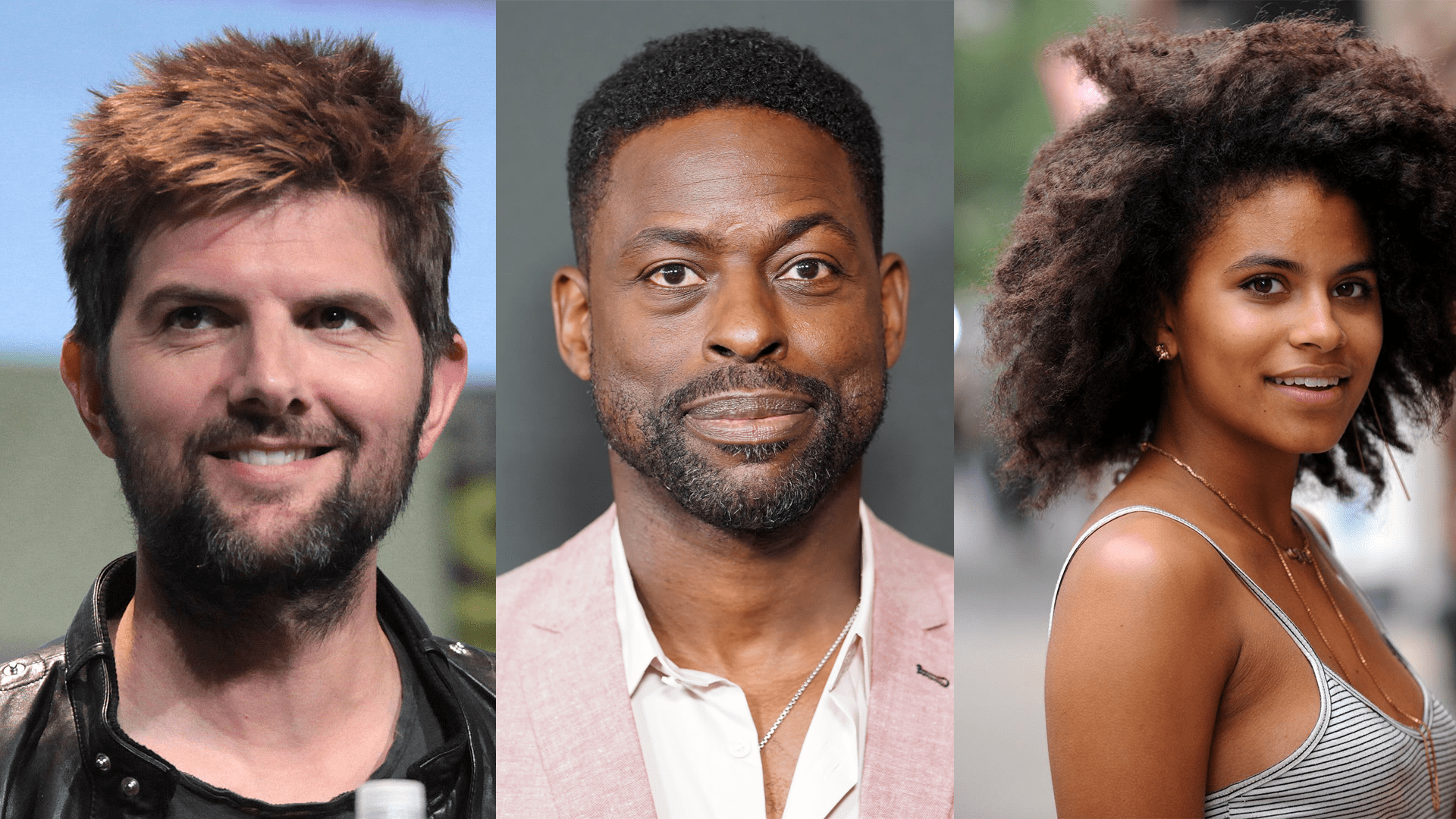


I’ve got 30 pages left in the first Aftermath and I have been disappointed with it but after I’ve heard some solid reviews of Life Debt I’ll probably jump right into it when I’m done Aftermath.
If you get through Aftermath without clawing your eyes out, I reckon you should be fine with Life Debt. ;^)
It’s not the present tense that bothers me — it’s not the first novel I’ve encountered that uses that. But Wendig is addicted to using really clunky similes. Admittedly the habit was far worse in the first Aftermath when sometimes he was doing it 4 or 5 times on a page. It still happens in Life Debt though.
I hear you on the clunky simile thing. Not that my own writing is always free of awkward bits, but… well again, this is why it’s so important for an author to have a good editor.
Y’know, I’ve read some of Wendig’s blog posts before, and I actually think that’s his stronger venue for writing. Just after I finished up this review, one of my FB friends posted a rant about the “tiny house” fad – and the rant turned out to be one of Chuck Wendig’s blog posts. Got more than a couple laughs from that one.
Yeah I like a lot of Wendig’s blog. He’s a smart and funny guy. I always like someone who can annoy the more stick-up-their-ass elements of fandom.
Pro tip to those who dislike Wendigs writing style. Audible this book instead with the added sound effects its like listening to an old school story on the radio. The guy who does the audiobook is really good. It made me enjoy the first Aftermath book. Couldn’t recommend it more.
If you have a hard time doing all that stuff in your head as you read, this is the way to go. I don’t do audio as I feel like it takes away from my imagination, but I hear novels I read as an audiobook, if that makes sense.
“I do have to say, though… the use of “busted” in place of “broken,” as
occurs on at least one occasion in Life Debt, will always make even the
best writing sound amateurish.”
Agreed. I also cringe every time I see “jury-rigged.” That’s not the correct term; it’s Jerry-rigged, and it is a slang term from WWII in reference to the “Jerry’s” mechanical aptitude, and every time he uses it, it really ticks me off. Come up with your own in-universe euphemism and we’re good here.
Edit: he uses it A LOT
What’s wrong with busted, though? Seems like legit slang to use.
It sounds semi-literate when used in place of “broken” is what’s wrong with it. It’s one thing to throw it out there in normal conversation, but when I see authors screwing it up and even journalists writing it that way… it’s an amateur-hour screw-up.
Yeah, as a history buff, “jury-rigged” has always chafed my monkey too. Not quite as badly as “busted” does, but still.
Gotta hang some of the blame on Wendig’s editor for this, of course, for letting things like this slide on by.
What about when people say Calvary for mounted units? Calvary is where Jesus was crucified, cavalry is a mounted military unit.
Yeah, and that always reminds me just a bit of how folks can never seem to get the word “chipotle” right.
I swear, most of the time I try not to be a spelling and pronunciation Narzi, but then there are those other times…
Jury has a different definition meant as temporary use. A nautical term usually associated with jury mast as in a temporary mast. Jury-rigged* was a derivative of jury-mast and has been in use for over 100 years, maybe 200. Its a valid term not really a derivative of jerry-rigged, its more like jerry-rigged would be a slang term for jury rigged. At least that has always been my understanding.
Correct!
Jury-rigged is actually the correct terminology, but I agree that it should not have been used in the story. Wendig uses too many colloquialisms. He makes me pine for a James Luceno novel.
I’m really reluctant to continue in the post Jedi novels after the let downs of aftermath and bloodline.
I hear you. I actually liked Bloodline as a “palace intrigue” sort of story, but I know it left a lot of fans rather cold. Life Debt has a bit more momentum to it than Aftermath or Bloodline, so I’d say maybe give it a try if your money isn’t too tight and you’re in the mood for a bit of a gamble.
“A bit of a gamble.” What kind of odds am I getting? 😉
There are some scenes with Han and Chewie alone that make the book worth every cent. The rest is also quite good. Not EXCELLENT, but quite good!
I agree, Han and Chewie play an interesting part in this story, and have some excellent scenes.
You WANT me to tell you the odds? ;^)
Life Debt was certainly better than Wendig’s first attempt, but still not a “great” Star Wars novel like Lost Stars is. The present-tense is still just as annoying as in the first novel, and the interludes can sometimes come at points that disrupt the flow of the book.
I guess the biggest knock I have against the book is that Wendig feels like a big league SJW, trying to cram as many unconventional relationships as possible into the story. There are so many that some do not get any kind of meaningful attention, and seem placed into the story just to check a box.
Also, the major “twist” plot point at the end was telegraphed and predictable.
Life Debt seems to have some important characters and plot points in the Star Wars universe so it is a book hard core fans should read, but Wendig is just not my favorite Star Wars novelist.
I always found it odd that in this but especially in the first aftermath people are speaking about jedi and the force like they never left . We know that people barely remember jedi, and here they even reference their powers. Didn’t like that
Was really hoping Tashu’s nugget from the 1st book would yield a bit more red meat, but alas….no:
“We must instead move toward the Dark Side. Palpatine felt that the universe beyond the edges of our maps was where his power came from. Over the many years he, with our aid, sent men and woman beyond known space. They built labs and communication stations on distant moons, asteroids, out there in the wilds. We must follow them. Retreat from the galaxy. Go out beyond the veil of stars. We must seek the source of the Dark Side like a man looking for a wellspring of water…”
Aside from those brief flashes from Rax’s childhood meeting Palpy, that thread was barely advanced
http://www.vintagestarwarscollectables.co.uk/images/Star%20Wars/Full%20Size/Carded%20Figures/Carded%20Figures/CardedVintage/StarWars_MOC-8.jpg